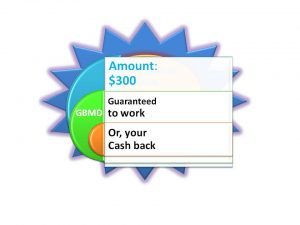Genome-2-Bio-Medicine Discovery center founder’s father’s (teacher) death anniversary day-26th May
*********
On the eve of Genome-2-Bio-Medicine Discovery center founder’s father’s (teacher) death anniversary day, we wish to inform you that the Bio-Medical ideas posted today (26/May/2017) will be available to the use of Scientists/Professors/Physicians/Researchers/Post-doctoral fellows/Teachers for free. So, there will be no terms and conditions for the ideas posted today (26/May/2017). Each idea posted will be served first come, first served basis. Write to us at info@genomediscovery.org for more details.
Dr L Boominathan PhD
Founder President & CSO, GBMD.
_________________________________________________________________________________________________
Introduction: What they say
A study from the Institute for Molecular Systems Biology, ETH Zurich, Zurich, Switzerland shows that “MicroRNAs 103 and 107 regulate insulin sensitivity.” This study was published in the June 8, 2011 Nature [One of the best journals in Science with an I.F of >43] by Prof. Stoffel M, Trajkovski M and others.
In connection to the above finding, Prof. Irani K’s research team, from Cardiovascular Division, Department of Internal Medicine, Abboud Cardiovascular Research Center, University of Iowa Carver College of Medicine, Iowa City, USA; University of California, San Diego, USA; and VA San Diego Healthcare System, University of California, San Diego, USA has reported recently in the February 9, 2016 issue of the Journal “Scientific Reports” that “Sirtuin1 protects endothelial Caveolin-1 expression and preserves endothelial function via suppressing miR-204 and endoplasmic reticulum stress.“
What we say:
On the foundation of these interesting findings, Dr L Boominathan PhD, Director-cum-chief Scientist of GBMD, reports that: Natural mineral rich water therapy for Metabolic diseases: Natural mineral rich water increases the expression of Caveolin-1, stabilizes insulin receptor, promotes insulin sensitivity, incrases vasorelaxation, and decreases the risk of hyperglycemia and TIIDM via up regulation of its target gene

From Significance of the study to Public health relevance:
Given that: (1) more than 387 million people worldwide are affected by Diabetes mellitus (DM); (2) diabetic disease results in a number of health complications, including diabetic nephropathy, diabetic retinopathy, and diabetic neuropathy; (3) one third of people with diabetes suffer from diabetic kidney disease (DKD); and one third of them will develop kidney failure; (4) Diabetes is going to be one of the top 10 causes of death by 2030; (5) the life-long painful injection/drug treatment is required to treat DM; (6) the global economic cost spent for diabetes treatment in 2014 was little more than 600 billion US dollars, there is an urgent need to find: (i) a way to induce regeneration of adult ß-cells that were lost in DM; (ii) a cheaper alternative to the existing expensive weight-loss drugs; (iii) a side-effect-free natural product-based drug; and (iv) a way to cure, not just treat, diabetes.
From what is known to what we infer from what they say:
Prof. Stoffel’s research team had shown that inactivation of MiR-103/107 results in (1) increased expression of Caveolin-1; (2) Stabilization of the insulin receptor; (3) enhanced insulin-signalling and -sensitivity; (4) reduced adipocyte size; and (5) enhanced glucose-induced insulin secretion. Further, they have shown that miR-103/107 is upregulated in obese mice, suggesting that decreasing the expression of MiR-103/107 may increase the expression of Caveolin-1 (CAV1) in diabetic patients and alleviate TIIDM.
In line with above findings, Prof. Irani’s research team has recently shown that deletion of endothelial Sirtuin1 in mice results in (1) increased ER stress; (2) increased miR-204 expression; (3) reduction of Caveolin-1 expression; and (4) impaired endothelium-dependent vasorelaxation. Further, they have shown that inhibition of miR-204 results in (1) up regulation of Caveolin-1; (2) inhibition of vascular ER stress, suggesting that increasing the expression of Sirtuin1 may increase and decrease the expression of Caveolin-1 (CAV1) and miR-204, respectively, in diabetic patients, and alleviate TIIDM.
From Research findings to Therapeutic opportunity:

This study suggests Natural mineral rich water-based therapy for TIIDM and its associated complications. Natural mineral rich water, by increasing the expression of its target genes, it may increase the expression of Caveolin-1 (fig.1).
[easy_payment currency=”USD”]
Thereby, it may: (1) promote stabilization of insulin receptor; (2) enhance insulin signalling; (3) increase insulin sensitivity; (4) decrease miR-204 expression; (5) attenuate ER stress; and (6) promote vasorelaxation.
Thus, physicians/diabetologists may consider encouraging their diabetic patients to consume Natural mineral rich water. Taken together, Natural mineral rich water therapy may be used to treat TIIDM and its associated vascular complications.
Details of the research findings:
Idea Proposed/Formulated (with experimental evidence) by: Dr L Boominathan Ph.D.
Terms & Conditions apply http://genomediscovery.org/registration/terms-and-conditions/
Undisclosed mechanistic information: How does Natural mineral rich water increase the expression of Caveolin-1 to promote insulin sensitivity?
Amount: $300#
# Research cooperation
For purchase and payment details, you may reach us at info@genomediscovery.org
References:
Web: http://genomediscovery.org or http://newbioideas.com/
Citation: Boominathan, L., Natural mineral rich water therapy for Metabolic diseases: Natural mineral rich water increases the expression of Caveolin-1, stabilizes insulin receptor, promotes insulin sensitivity, incrases vasorelaxation, and decreases the risk of hyperglycemia and TIIDM via up regulation of its target gene., 26/May/2017, 11.03 pm, Genome-2-Bio-Medicine Discovery center (GBMD), http://genomediscovery.org
Courtesy: kindly drop us a line when you cite this article.

